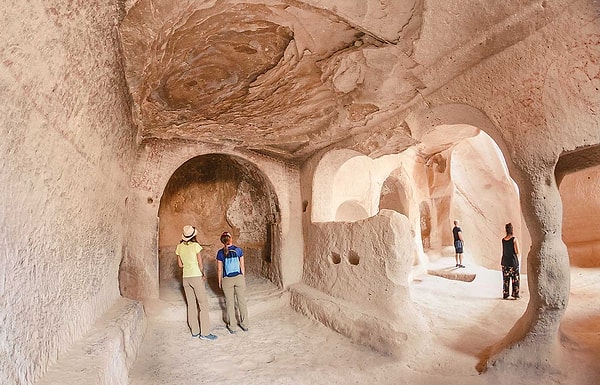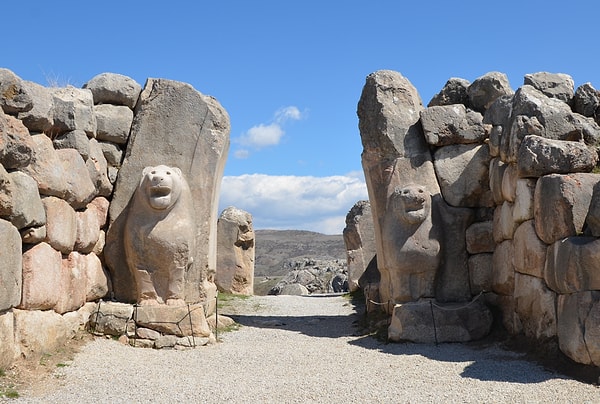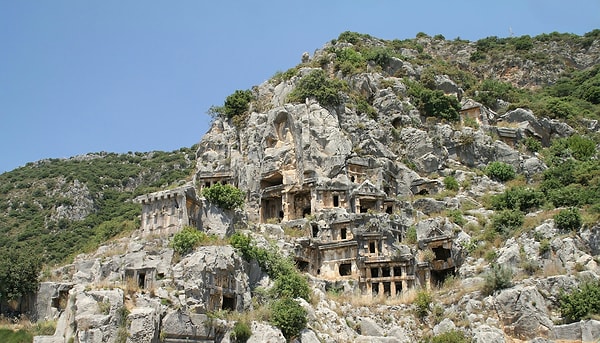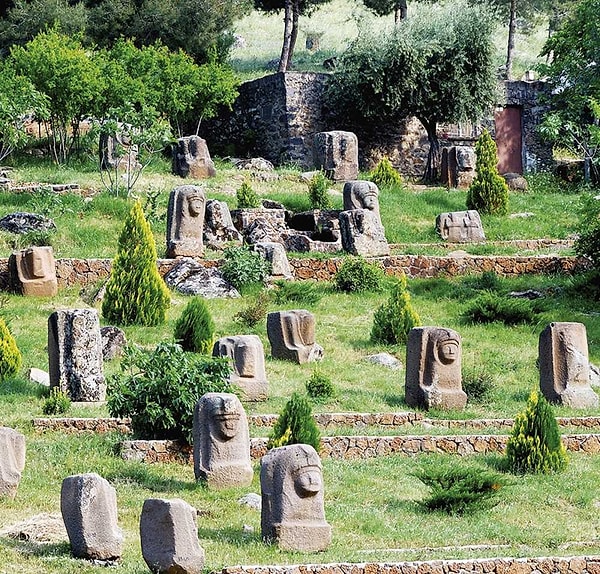Explore Türkiye’s Stunning Open-Air Museums: Göreme, Hattusha, Olympos & More!
With its historical sites, UNESCO heritage locations, and vast archaeological treasures, Türkiye is truly a giant open-air museum. Which unique part would you most like to explore? We suggest starting from the very beginning: the open-air museums scattered across Anatolia. 👇
Listening to the stories of the past in Göreme

If these rocks could speak, they would recount countless tales in many languages. Picture a place surrounded by earthy tones and neutral colors—welcome to 'the land of beautiful horses.' Located in Nevşehir, the Göreme Open Air Museum is one of Cappadocia’s top destinations. A UNESCO World Heritage Site, it’s renowned both for its natural beauty and cultural significance.
At its core, Göreme is a massive monastery complex, a rock settlement that has hosted life for centuries.

It played a key role in early Christianity, preserving Byzantine church architecture through its tunnels, stairways, and chambers—marvels that also offered protection from wars and conflicts. The site is home to numerous churches, including Elmalı Church, Azize Barbara Church, Karanlık (Dark) Church, and Çarıklı (Hidden) Church. Each holds deep meaning, adorned with paintings and carvings. For instance, Elmalı Church is said to depict an angel holding an apple, possibly representing Michael. Just a 15-minute walk from Göreme village, this awe-inspiring site awaits.
Journey through time at Zelve Open Air Museum

The second most visited museum in Cappadocia, Zelve Open Air Museum is another UNESCO-listed treasure. Believed to be where Christianity first spread, this ancient settlement features three valleys filled with fairy chimneys (Peri Bacası), formed by volcanic activity. Explore caves that once served as homes, a rock-carved mosque, tunnels, and 15 churches, including Üzümlü, Balıklı, Geyikli, and Direkli Churches. Be sure to wear comfortable shoes and bring water—the path is long and rugged!
Uncovering the Hittite legacy in Hattusha

Hattusha, the Hittite capital, was once a walled city divided into zones, with palaces, temples, and trade centers. The Lion Gate and Royal Gate, adorned with intricate carvings, are particularly striking. Nearby, Yazılıkaya rock shelter showcases Hittite relief art. Recognized as a UNESCO site in 1986, this ancient city in Çorum’s Boğazkale district is a must-see.
Where myths come alive in Olympos

Step carefully—this is a nesting ground for Caretta Caretta turtles! Olympos, meaning 'the great mountain,' was a key Lycian port city steeped in myth. The Legend of Chimera tells of a fire-breathing monster, and today, the eternal flames of Yanartaş still burn. Ruins include temples, tombs, a theater, and Gelidonya Lighthouse.
Exploring the wealth of Perge

Once a wealthy Roman metropolis, Perge boasts a grand gate, stadium, theater, colonnaded streets, and statues like the river god Kestros. Walking through this ancient city, you can almost hear echoes of the past.
The birthplace of sculpture in Yesemek

Dating back to 900-800 B.C., the Yesemek Quarry and Statue Workshop in Gaziantep reveals how stone blocks became sculptures. Hundreds of lions, sphinxes, and god reliefs were crafted here, offering a glimpse into ancient artistry.
The city of scholars: Nysa

Named after women of Hellenistic royalty, Nysa in Aydın was a hub of learning. Philosophers like Strabo and Apollonios lived here. Today, remnants include a Roman-era bridge, stadium, theater, library, and Bouleuterion (Parliament building).
Keşfet ile ziyaret ettiğin tüm kategorileri tek akışta gör!

Send Comment